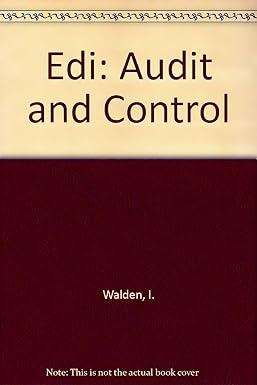Question
13-22 (OBJECTIVES 13-3, 13-4, 13-5) The following are commonly performed tests of controls and substantive tests of transactions audit procedures in the sales and collection
13-22 (OBJECTIVES 13-3, 13-4, 13-5) The following are commonly performed tests of controls and substantive tests of transactions audit procedures in the sales and collection cycle:
1. Compare the dates of recording sales in the sales journal with the invoices and shipping documents to see if there is any discrepancy.
2. Examine the evidence, such as the accountants initials, to ensure that the accounts receivable master file is reconciled to the general ledger.
3. Compute prices and extensions on sales invoices and trace the prices on invoices to the approved price list or the price master file.
4. Find out whether statements detailing outstanding amounts were sent to customers on a monthly basis.
5. Examine sales returns for receiving reports that have been signed by an authorized employee.
6. Obtain a prelisting of cash receipts and trace their amounts to the cash receipts journal, testing for names, amounts, and dates.
7. Trace cash receipts entries recorded in the cash receipts journal to the bank statement for a month.
Required.
a. Identify whether each audit procedure is a test of control or a substantive test of transactions.
b. State which of the seven transaction-related audit objectives each of the audit procedures fulfills.
c. Identify the type of evidence used for each audit procedure, such as inspection and observation.
Step by Step Solution
There are 3 Steps involved in it
Step: 1

Get Instant Access to Expert-Tailored Solutions
See step-by-step solutions with expert insights and AI powered tools for academic success
Step: 2

Step: 3

Ace Your Homework with AI
Get the answers you need in no time with our AI-driven, step-by-step assistance
Get Started


